If you’re only using third-party tools for keyword research, you’re overlooking one of the most underrated (and completely free!) resources out there—Google Search Console (GSC).
I’ll be honest, I used to underestimate it too. For a long time, I would occasionally pop in to check impressions or fix crawl errors. But once I took the time to explore the data, I discovered a treasure trove of keyword insights, straight from Google itself.
In this post, I’ll show you four simple yet powerful ways to use Google Search Console for keyword research.
So, without any further ado, let’s get started.
Table Of Contents
1 Why Use Google Search Console for Keyword Research
Unlike third-party SEO tools, which rely on estimates and algorithms, Google Search Console (GSC) gives you something different: direct insights from Google itself, based on how real users interact with your site in search results.
That’s what makes it such a powerful tool for keyword research. You get access to reliable metrics, like impressions, clicks, click-through rates (CTR), and average positions, that reflect how your content is truly performing.
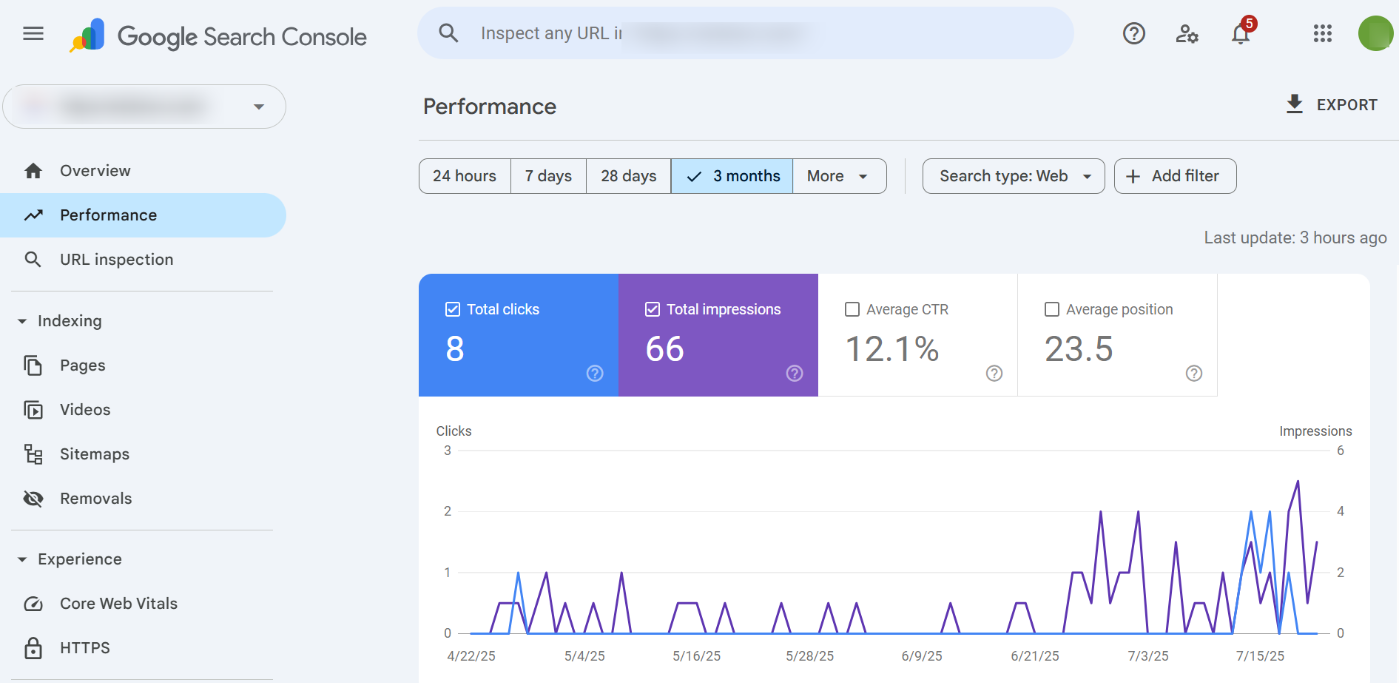
But it doesn’t stop there. GSC also reveals keywords you already rank for but haven’t fully optimized. With a few strategic updates, those keywords can bring in a noticeable boost in traffic.
So, Google Search Console is a tool you can’t afford to ignore.
2 How to Find Keywords Using Google Search Console
Now that you know how powerful Google Search Console can be for keyword research, let’s walk through how you can use it to discover opportunities for your content.
If you’re using Rank Math, you’ve got an extra advantage. Once you connect your Google account, Rank Math pulls all those insights directly into your WordPress dashboard. It saves you from jumping between tabs and helps you see what’s working, right where you’re creating your content.
2.1 Finding Search Queries
To begin your keyword research in Google Search Console, one of the first steps is to navigate to the Performance report. This section provides a wealth of data about your site’s performance in Google’s search results.
Within the Performance report, you can filter by QUERIES to view the search terms driving traffic to your website. These are the keywords your site ranks for, giving you a direct look at how visitors find your content.

Once you’ve accessed the list of search queries, focus on two key metrics:
- Impressions – how many times your site showed up in search results
- Clicks – how many people clicked through to your site
By comparing these two metrics, you can understand the effectiveness of your keywords.
For instance, a keyword with high impressions but few clicks suggests that your site is being shown in search results but isn’t attracting enough user interest.

These high-impression, low-click keywords offer valuable optimization opportunities.
For instance, if your site frequently appears for the search query ‘on-page SEO and off-page SEO’ but isn’t receiving many clicks, you can update the title or description to make it more compelling. By optimizing these underperforming keywords, you can increase your click-through rate (CTR) and drive more traffic to your site.
2.2 Identify New Keyword Opportunities
One of the best parts about using Google Search Console for keyword research is that it helps you discover new opportunities you might’ve missed, especially long-tail keywords.
These are more specific search phrases (usually three or more words) that may not have massive search volume, but they’re often less competitive and bring in highly targeted traffic.

To identify long-tail keyword opportunities, start by sorting the queries in the Performance report based on impressions. This allows you to see which keywords your site appears for, even if they’re not generating many clicks.
Look for search terms with a moderate number of impressions, but might not yet be heavily targeted in your content. These keywords often reflect niche queries that visitors are searching for but that competitors may not be optimizing for, making them less competitive.
For instance, if your site is ranking for a general keyword like SEO tools, you can find a long-tail variation, such as the best SEO tools for small businesses, with fewer impressions but much less competition.
Also, understand the intent behind the keywords in your Google Search Console Performance data. If you notice most of the keywords driving traffic to your site have informational intent, consider creating more in-depth, educational content like guides, how-tos, or FAQs.
2.3 Find Easy-to-Rank Keywords
To find these hidden opportunities, navigate to the Performance tab and make sure the Average CTR (Click-Through Rate) column is visible.
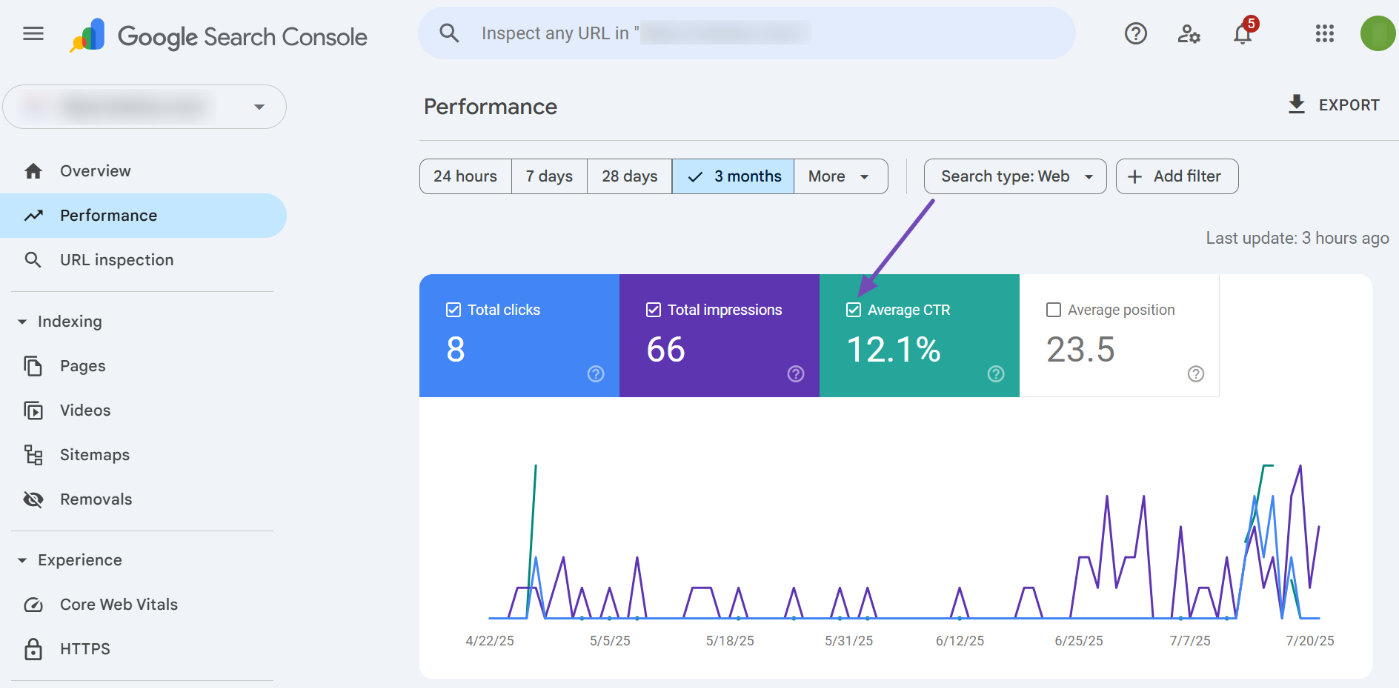
CTR tells you how often people click your link after seeing it in search results. So when you see keywords with low CTR but decent impressions, that means your page is already showing up, but probably not catching attention. Then, sort your queries by CTR from low to high.
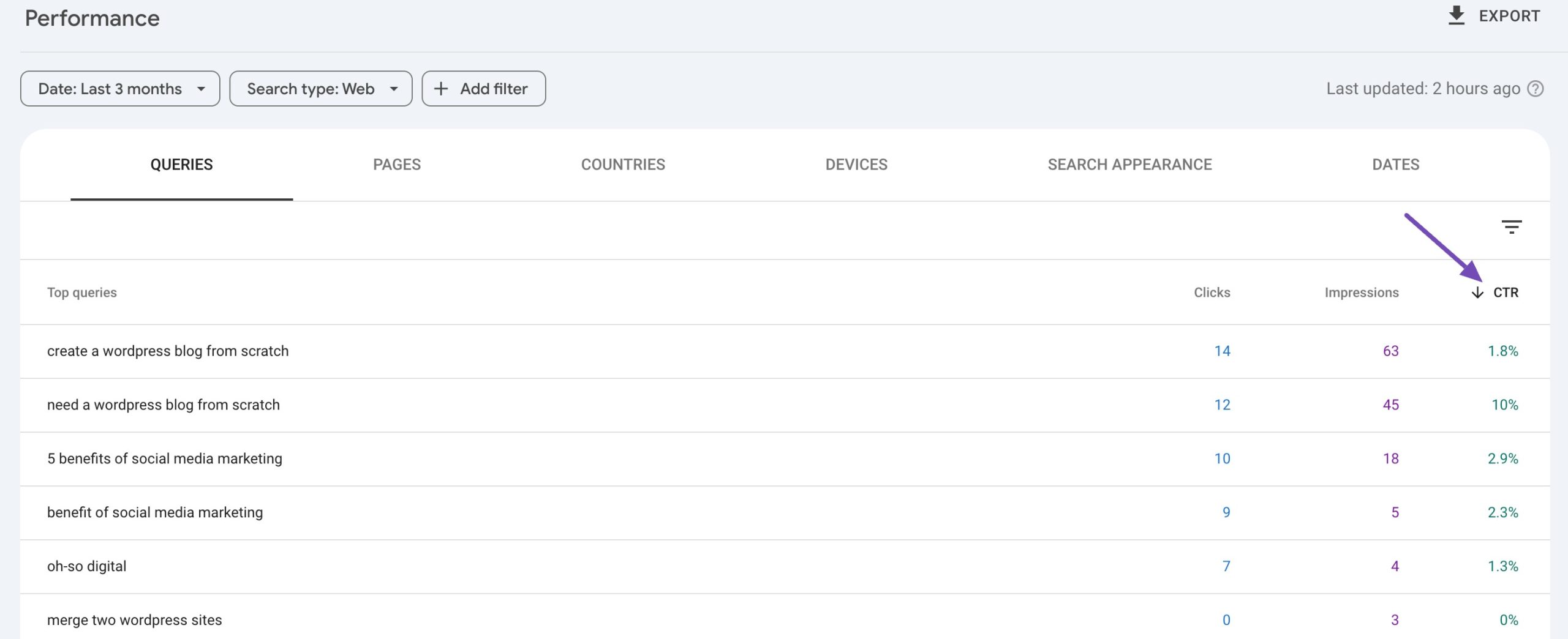
These are often easy-to-rank keywords that you can use to create new content, thereby improving your site’s overall performance.
2.4 Identify Underperforming Pages
Noticing a drop in traffic? One of the best ways to address this issue is by identifying which of your pages are underperforming, and Google Search Console makes this task easier than ever.
Start by navigating to the Performance section in your Search Console. Click on More, then select Compare. You can compare your performance data to the previous week or previous time period, or select a custom range if you want to compare year-over-year performance. Once done, click Apply.
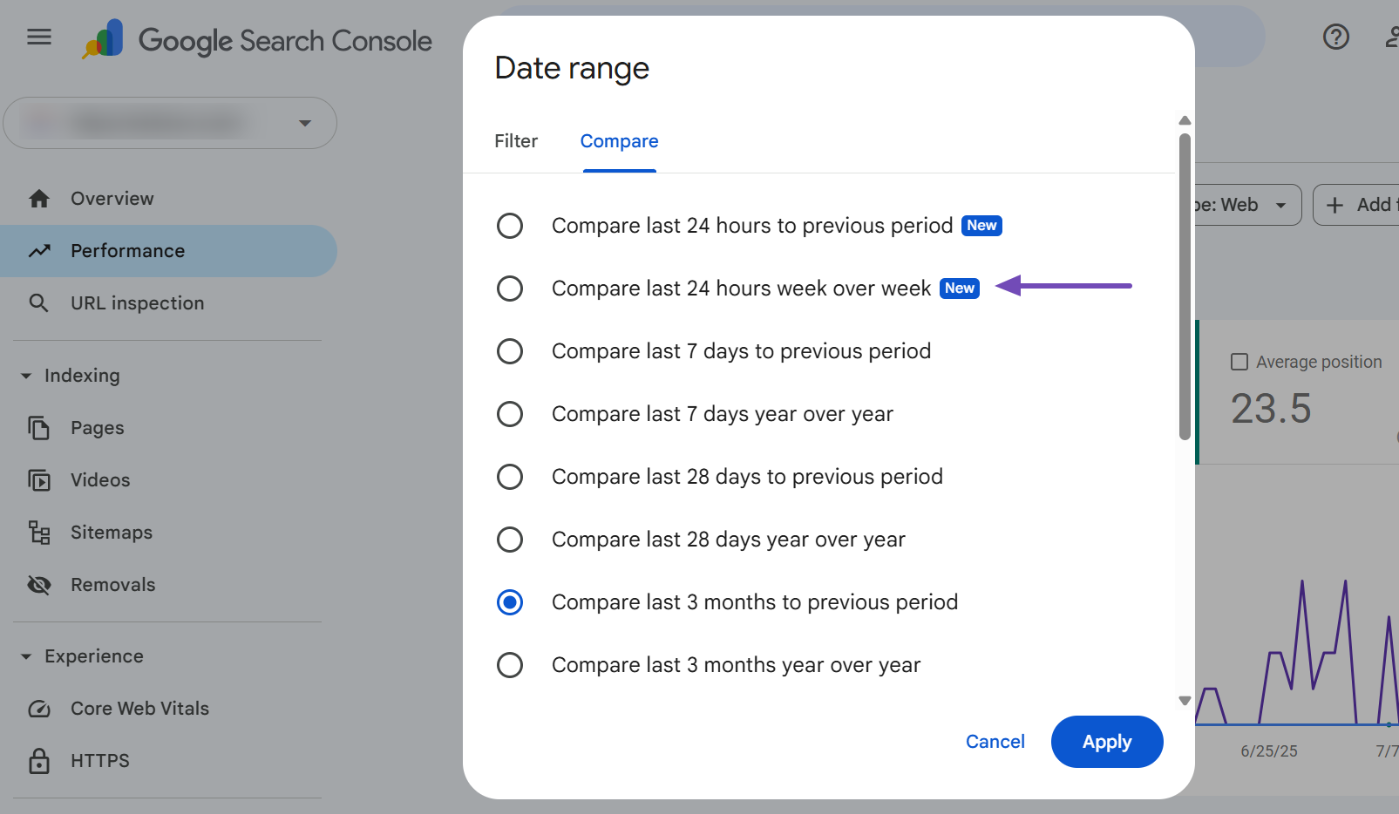
Once the comparison is set, switch to the Pages tab. This will show you how each individual page has performed over time.
Now, sort the table by Click Differences and Impression Differences. Focus on pages showing negative values; these are the ones losing visibility or clicks.
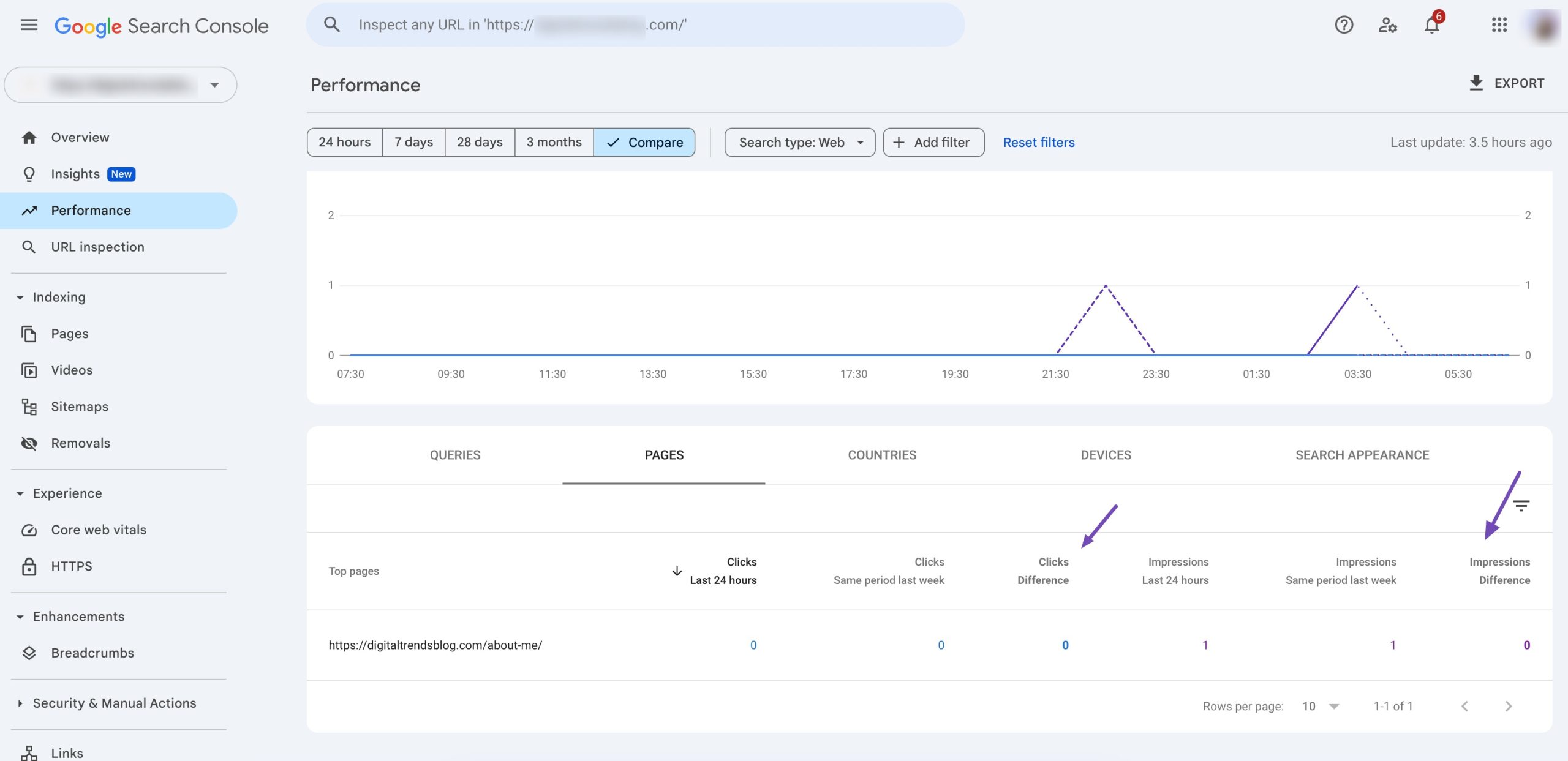
These underperforming pages are your opportunity areas. You can update content, improve internal linking, refresh outdated info, or even tweak titles and meta descriptions to revive their performance.
3 Conclusion
Google Search Console is a powerful, but often overlooked tool for keyword research.
With just a little digging, you can discover valuable keywords, optimize content based on search intent, improve pages that are close to ranking higher, and track how your keywords perform over time.
And the best part? It’s completely free.
With consistent use and a strategic approach, Google Search Console can significantly enhance your site’s visibility in search and drive more targeted traffic, eliminating the need for expensive third-party tools.
Start using Google Search Console for keyword research, and you’ll stay one step ahead of the competition while creating content your audience is actually searching for.
If you like this post, let us know by Tweeting @rankmathseo.
![How to Use Google Search Console for Keyword Research [4 Easy Ways]](https://rankmath.com/wp-content/uploads/2024/10/Using-Google-Search-Console-for-Keyword-Research.png)